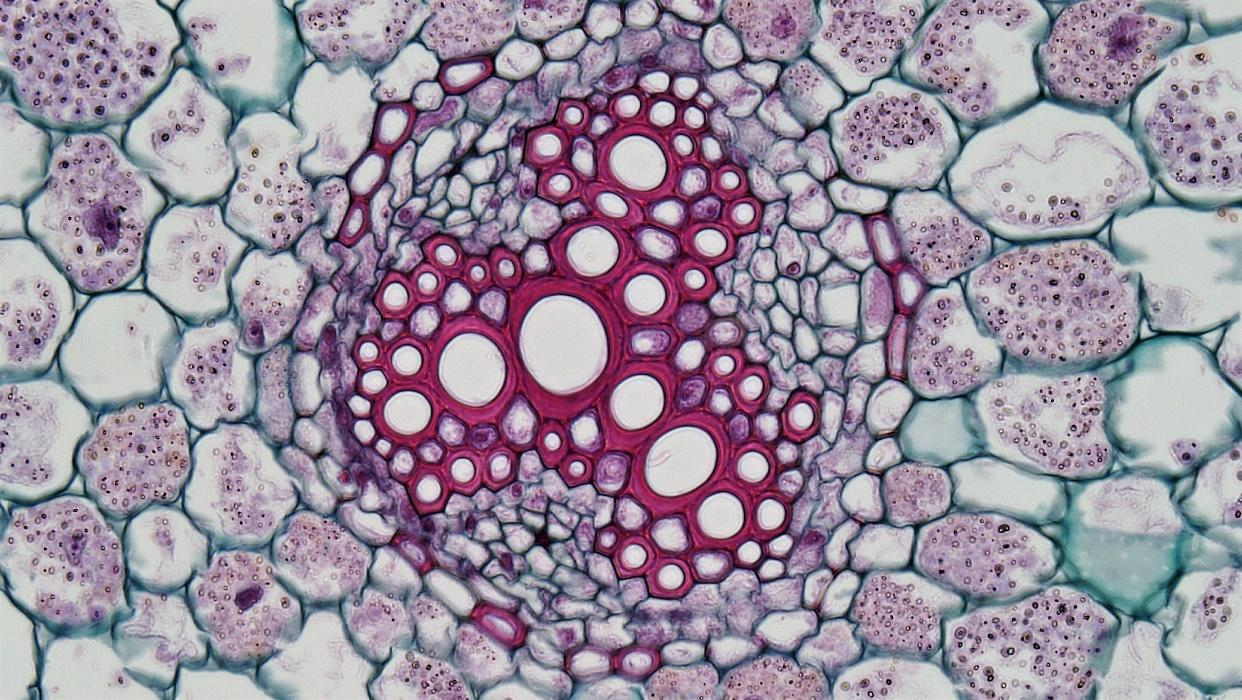
Conjunctive tissue is found in the mature stem of
(A) Mirabilis Jalapa
(B) Peperomia pellucida
(C) Boerhaavia
(D) Tinospora cordifolia
Answer
501.6k+ views
Hint: Conjunctive tissue is defined as the tissue which is either parenchyma or sclerenchyma in origin. This tissue is present between the bundles of the xylem and the phloem tissues in the vascular bundles of the root. This is present in both dicot and monocot root.
Complete step by step answer:
In the dicot stem, it is involved in the formation of the cambium. Cambium is the layer of the
tissue which has the undifferentiated growth which is partially differentiated for the purpose of plant growth. This forms the parallel rows of cells between the xylem and the phloem which in the future develop into the secondary tissues. Boerhavia diffusa is the one of the flowering plants. It is also known as punarnava.
Parenchyma cells present in the middle of xylem and phloem which transfer water and food respectively is called conjunctive tissue. It doesn't become meristematic at any formative stage in monocot. In the dicot plants like Boerhavia, the conjunctive tissue is condensed in the interfascicular locale and it becomes meristematic and brings about secondary tissue development. Hence the conjunctive tissue is found in the mature stem of the boerhaavia.

Hence the correct answer is option(C)
Note: In monocot root, these conjunctive tissues are present in the central portion of the root and are made up of the thin walled parenchymatic cells with the larger intercellular space between them. They possess the large pith and are well developed.
Complete step by step answer:
In the dicot stem, it is involved in the formation of the cambium. Cambium is the layer of the
tissue which has the undifferentiated growth which is partially differentiated for the purpose of plant growth. This forms the parallel rows of cells between the xylem and the phloem which in the future develop into the secondary tissues. Boerhavia diffusa is the one of the flowering plants. It is also known as punarnava.
Parenchyma cells present in the middle of xylem and phloem which transfer water and food respectively is called conjunctive tissue. It doesn't become meristematic at any formative stage in monocot. In the dicot plants like Boerhavia, the conjunctive tissue is condensed in the interfascicular locale and it becomes meristematic and brings about secondary tissue development. Hence the conjunctive tissue is found in the mature stem of the boerhaavia.

Hence the correct answer is option(C)
Note: In monocot root, these conjunctive tissues are present in the central portion of the root and are made up of the thin walled parenchymatic cells with the larger intercellular space between them. They possess the large pith and are well developed.
Latest Vedantu courses for you
Grade 10 | CBSE | SCHOOL | English
Vedantu 10 CBSE Pro Course - (2025-26)
School Full course for CBSE students
₹37,300 per year
Recently Updated Pages
Master Class 11 Business Studies: Engaging Questions & Answers for Success

Master Class 11 Economics: Engaging Questions & Answers for Success

Master Class 11 Accountancy: Engaging Questions & Answers for Success

Master Class 11 Computer Science: Engaging Questions & Answers for Success

Master Class 11 English: Engaging Questions & Answers for Success

Master Class 11 Maths: Engaging Questions & Answers for Success

Trending doubts
Which one is a true fish A Jellyfish B Starfish C Dogfish class 11 biology CBSE

Difference Between Prokaryotic Cells and Eukaryotic Cells

1 ton equals to A 100 kg B 1000 kg C 10 kg D 10000 class 11 physics CBSE

1 Quintal is equal to a 110 kg b 10 kg c 100kg d 1000 class 11 physics CBSE

One Metric ton is equal to kg A 10000 B 1000 C 100 class 11 physics CBSE

How much is 23 kg in pounds class 11 chemistry CBSE




